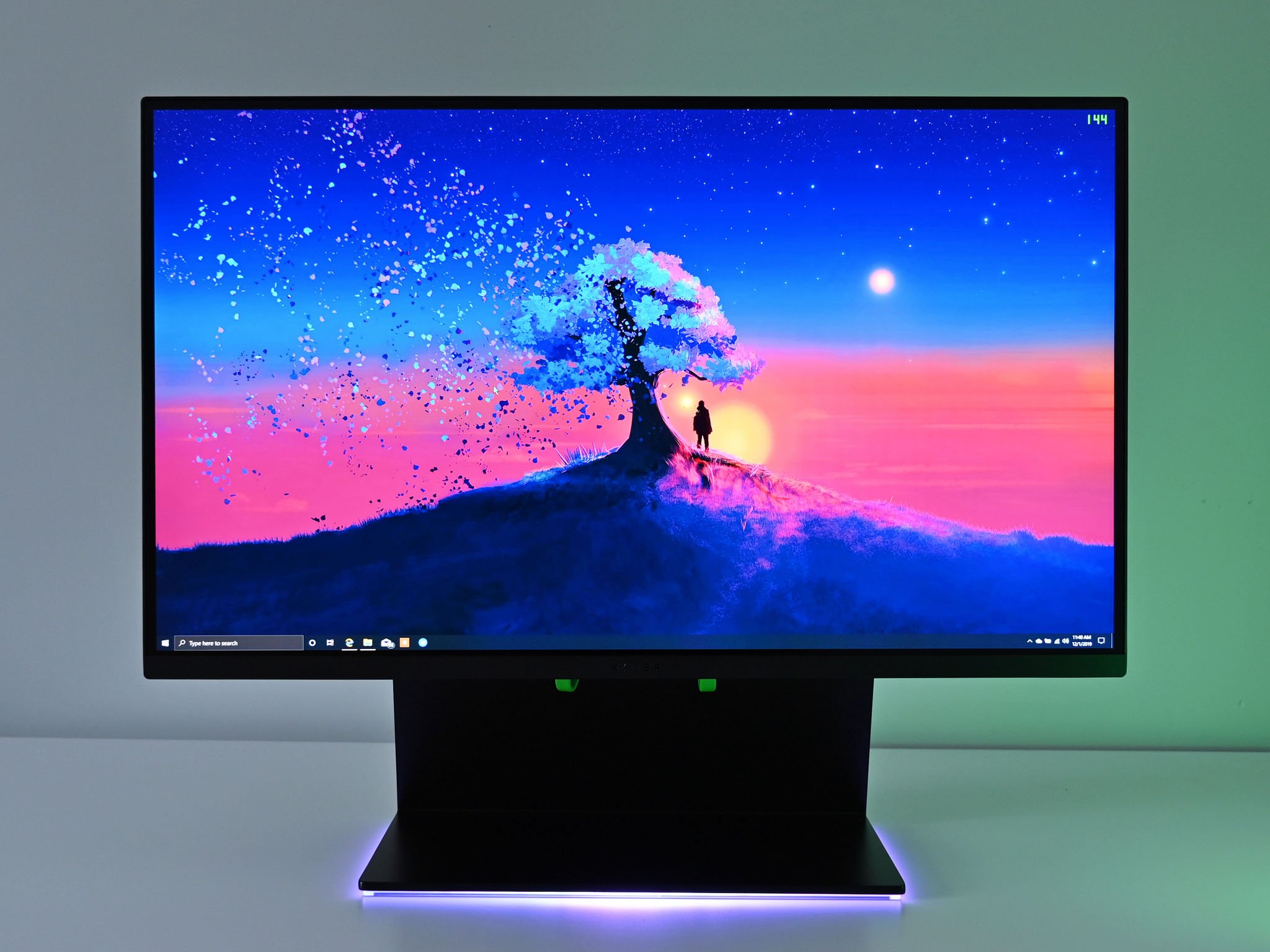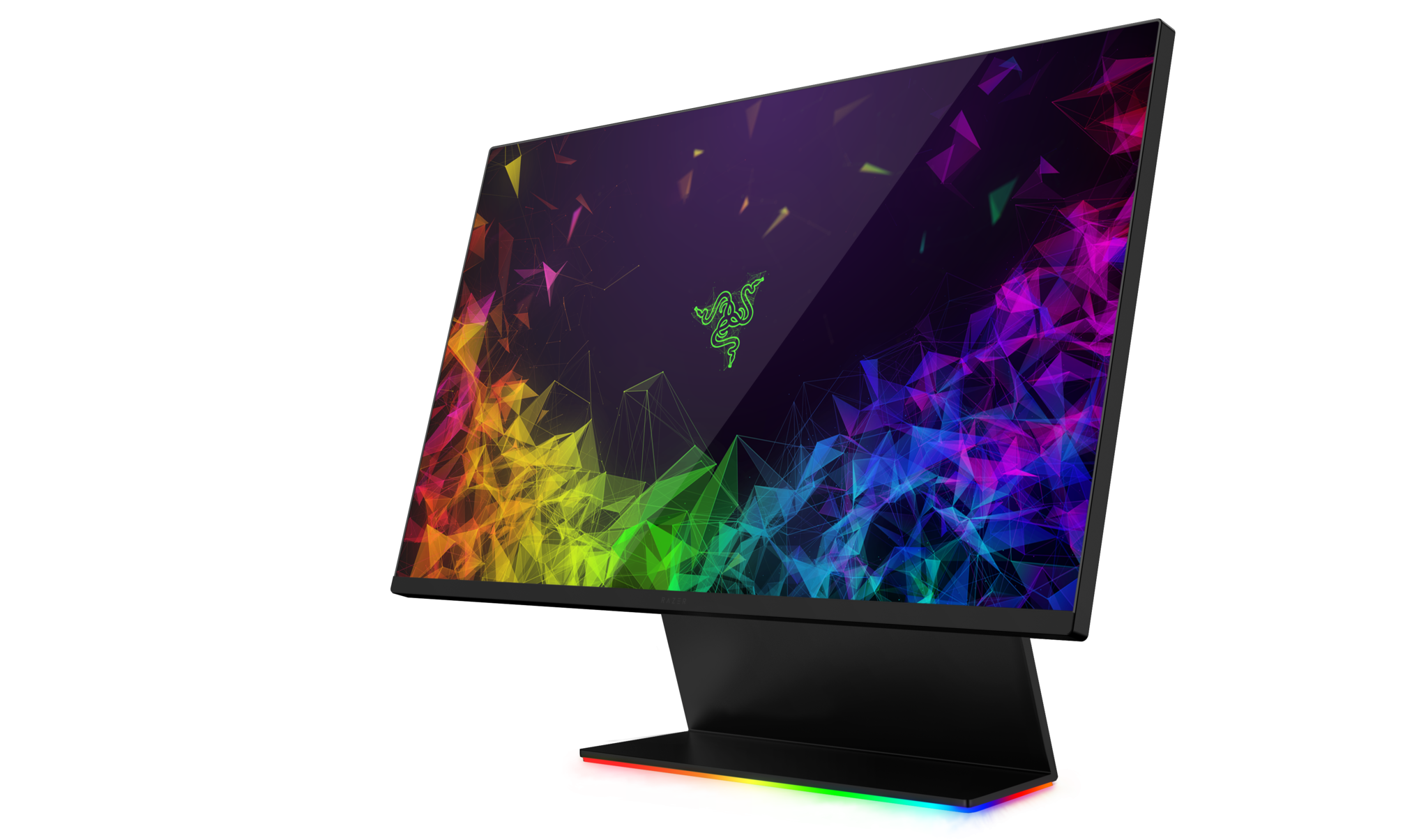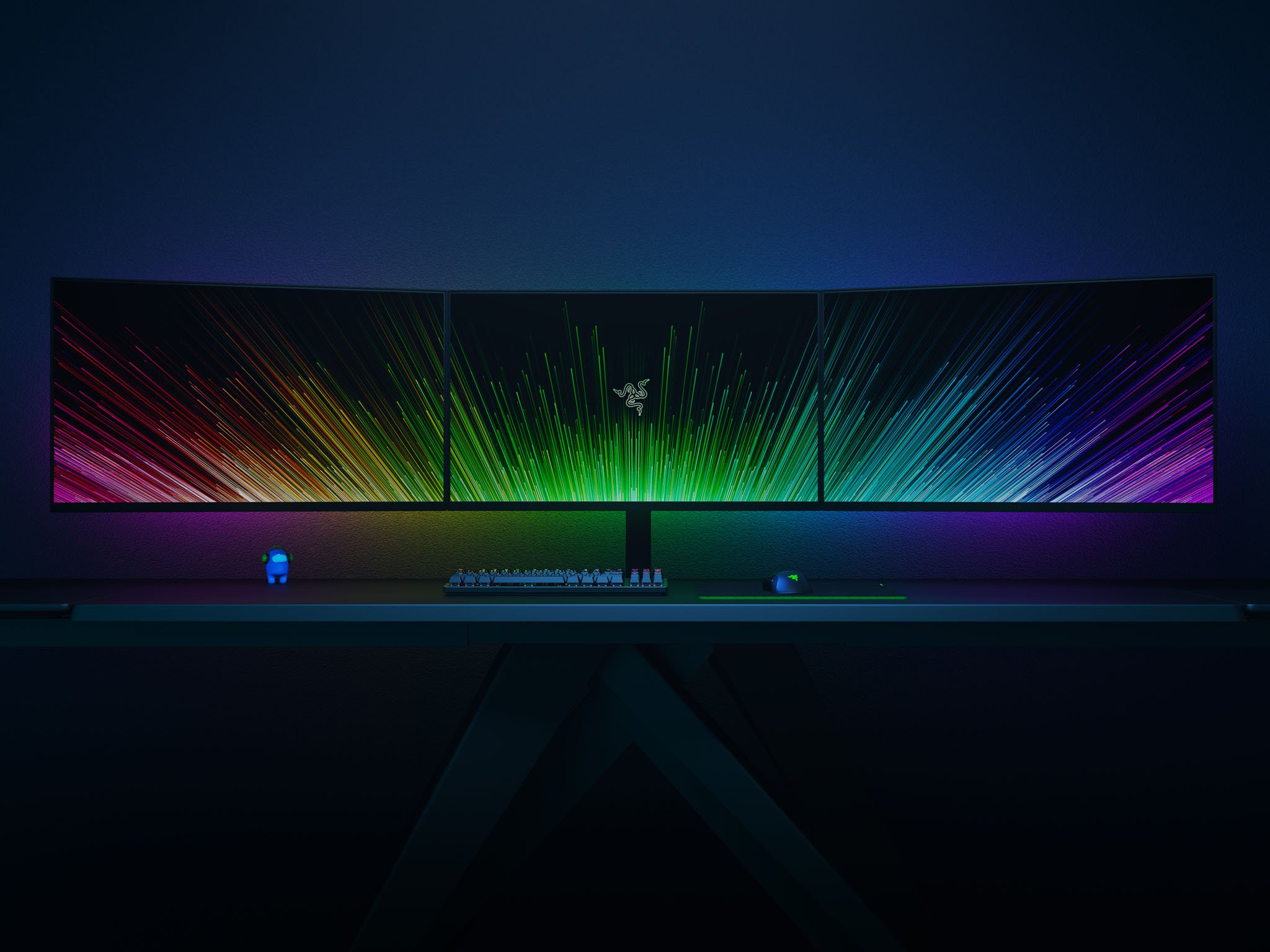Razer Raptor 27 (2021) gaming monitor gets THX Certified, 165Hz refresh, and VESA
Our top-recommended 27-inch gaming monitor just a nice revision for 2021 with all-around improved hardware.

What you need to know
- Razer is updating its popular Raptor 27 gaming monitor for 2021.
- The new version keeps the same award-winning design, but adds THX certification, and a 165Hz refresh rate.
- Razer is also now selling a $99 VESA adapter for all Raptor 27 models
- Pre-orders start today for $799.99.
In 2019, I reviewed Razer's first attempt at a gaming monitor. Named the Raptor 27, I liked it so much I ended buying one for personal use. While a great gaming monitor with 144Hz refresh, the excellent color accuracy caught my eye, making it the perfect 27-inch display for work or play. There's a reason why it made our best computer monitors list.
Now, 2.5 years later, Razer is giving the Raptor 27 a boost with a new edition that improves the hardware all-around while slightly increasing the pricing by $100. Here's what's new with the latest Raptor 27 and why we're still excited for it.
The new Razor Raptor 27 (2021)
Razer is keeping the overall design the same as the 2019 edition, which is a good thing. I loved the original's unique modern look, which also featured proper cable channels to keep the display and power cables neat, tidy, and out of sight. There is still, also, the famed Razer Chroma RGB lighting at the base and all the display controls available through Razer's software (a nice physical joystick on the rear lets you control things manually, too).
New for this year is an optional VESA adapter, 165Hz, and THX certification.
But there are a few notable changes for 2021. For one, the refresh rate is now bumped from 144Hz to 165Hz. While not a huge deal, when combined with newer NVIDIA RTX 30 series cards, the higher refresh ceiling is a welcomed addition. The 1ms response time remains the same.
The Raptor 27 is also now "the world's first THX-certified gaming monitor." Granted, Razer owns THX, but the companies operate independently. So, what does that label mean? It is effectively a system where THX ensures each display that leaves the factory meets stringent standards set by Razer. Specifically, each display undergoes "more than 400 individual tests to ensure color, tone, and images are displayed as their creators intended, for a stunning picture quality and level of detail." So it is a lot like factory calibration but more rigorous.
| Category | Specification |
|---|---|
| Screen size | 27 inches |
| Resolution | 2560 x 1440 (WQHD) 95% DCI-P3 |
| Refresh rate | 165 Hz |
| Response time | 1ms |
| HDR | Yes (HDR400) |
| Factory calibrated | Yes (THX Certified) |
| Sync | NVIDIA G-Sync AMD FreeSync |
| Aspect ratio | 16:9 |
| Panel | Non-Glare IPS 178° wide viewing angles |
| Brightness | 420 cd/m² (350 typical) |
| Contrast ratio | 1000:1 |
| VESA | Yes (optional adapter) |
| Ports | One DisplayPort 1.4 One HDMI 2.0b Two USB Type-A 3.2 Passthrough One USB Type-C PD (DP1.4 in Alt-mode) |
Another feather in the cap is the option to purchase a $99 VESA adapter. Doing so lets you replace the Raptor 27's big metal stand with a mount so you can place the Raptor 27 on a VESA compatible stand or bracket of their choice. Not only could you have a cleaner look, but this lets you now mount multiple Raptor 27s side-by-side for a true baller experience. The only downside is you lose that sweet RGB lighting from the base.
That VESA adapter also works with the older version of Raptor 27, so no need to rush out and buy a new display just for that feature.
All the latest news, reviews, and guides for Windows and Xbox diehards.
Overall, the Raptor 27 for 2021 is a mild refresh, but I already gave the monitor a near-perfect rating back in 2019, so there is little left to improve.
Read: Razer Raptor 27 review: The perfect display for working hard and gaming harder
Pre-orders start today, with shipping in the coming weeks. The price does go up to $799 so you may want to scoop up a few of the older models if those new features don't matter so much.
Besides the Raptor 27, Razer also introduced its brand-new AMD-powered Blade 14 laptop, and a 130-watt GaN travel charger.

Perfect for gaming or graphics work
Razer's refreshed Raptor 27 (2021) delivers a 27-inch anti-glare WQHD monitor with exceptional color accuracy, brightness, and a sweet 165Hz adaptive refresh sync that will satisfy AMD and NVIDIA fans. But the excellent cable management, unique look, and RGB lighting seal the deal.

Daniel Rubino is the Editor-in-Chief of Windows Central. He is also the head reviewer, podcast co-host, and lead analyst. He has been covering Microsoft since 2007, when this site was called WMExperts (and later Windows Phone Central). His interests include Windows, laptops, next-gen computing, and wearable tech. He has reviewed laptops for over 10 years and is particularly fond of Qualcomm processors, new form factors, and thin-and-light PCs. Before all this tech stuff, he worked on a Ph.D. in linguistics studying brain and syntax, performed polysomnographs in NYC, and was a motion-picture operator for 17 years.


